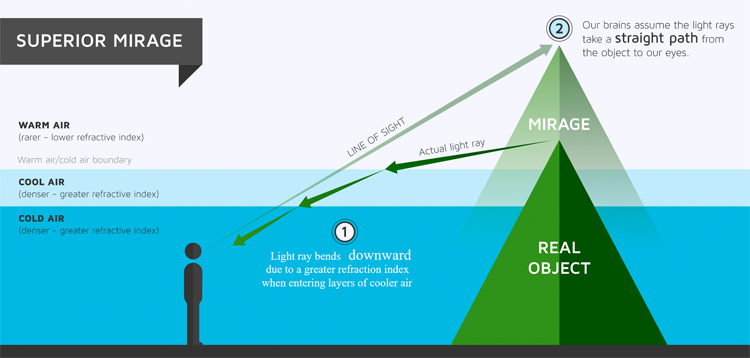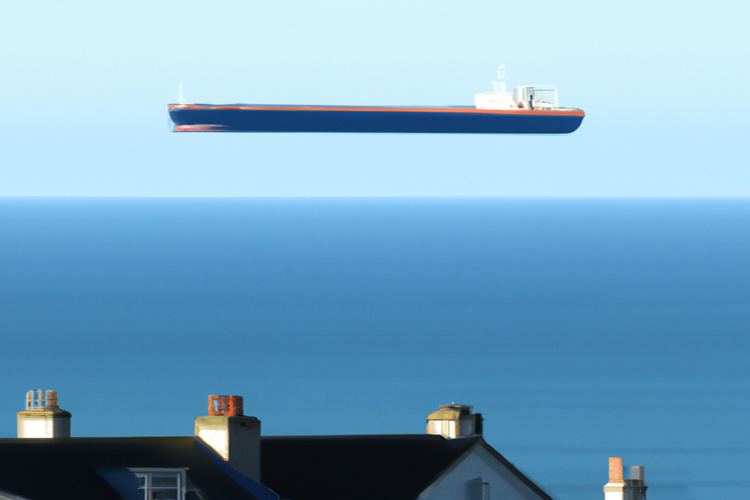Have you ever seen a cargo ship or yacht changing shape or floating in the air above the horizon line? The fascinating illusion is called Fata Morgana.
It's a relatively rare visual event, except for the polar regions and deserts where it can be observed in extreme - very cold and very hot - temperatures.
Fata Morgana is an optical phenomenon that occurs due to the bending of light in the Earth's atmosphere.
The atmospheric mirage is characterized by the distortion and elevation of distant objects, such as ships, creating the illusion that they are floating in the air.
The phenomenon is most commonly observed over large bodies of water, where temperature and air density variations play a crucial role.
Light rays travel through air layers with different temperatures and densities, causing them to bend and create multiple images of the same object.
When this occurs over a body of water, the distorted images can give the impression of elevated or floating entities.
For instance, distant objects, such as ships, may seem to be floating in the air or elevated above their actual position.
Meteorological conditions, such as the presence of temperature inversions, are critical for the occurrence of Fata Morgana.
Temperature inversions happen when a layer of warmer air traps cooler air beneath it, leading to a bending of light rays and the creation of complex superior mirages.

Refraction of Light
The name "Fata Morgana" is derived from the Arthurian legend, specifically from Morgan le Fay, the sorceress half-sister of King Arthur known for her magical abilities.
It perhaps suggested the enchanting, mysterious nature of this unusual visual event.
The key factor behind Fata Morgana is the refraction of light.
The most famous Fata Morgana is the one produced in the Strait of Messina, between Calabria and Sicily.
The effects are often visible in the morning after a cold night.
It is common in high mountain valleys, where the effect is accentuated by the curvature of the valley, which cancels out the curvature of the Earth.
It is also usually seen in the morning in the Arctic waters, with very calm seas, and is common on the icy surfaces of Antarctica.
Ghost Ships and UFOs
Frequently, a Fata Morgana undergoes swift transformations.
The mirage involves multiple images, some inverted (upside down) and others erect (right-side up), stacked atop one another. Additionally, these mirages exhibit alternating zones of compression and stretching.
Fata Morgana mirages can be seen with the naked eye, but for a more detailed view, it is recommended to observe them through binoculars, a telescope, or, as depicted in the images here, a telephoto lens.
The first to study the optical illusion in a laboratory were Gabriel Gruber (1740-1805) and Tobias Gruber (1744-1806) above Lake Cerknica in Slovenia.
Observers may still be deceived by Fata Morgana mirages, leading to occasional misinterpretations where they are mistaken for extraterrestrial objects like UFOs.
The legend of the Flying Dutchman may have been influenced by such optical illusions, where ships seem to defy natural laws, appearing and disappearing in ways that evoke a sense of the supernatural.
